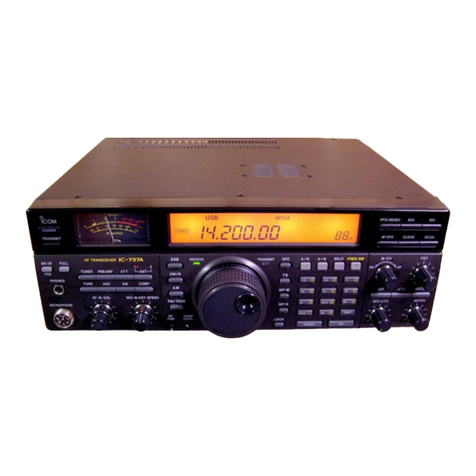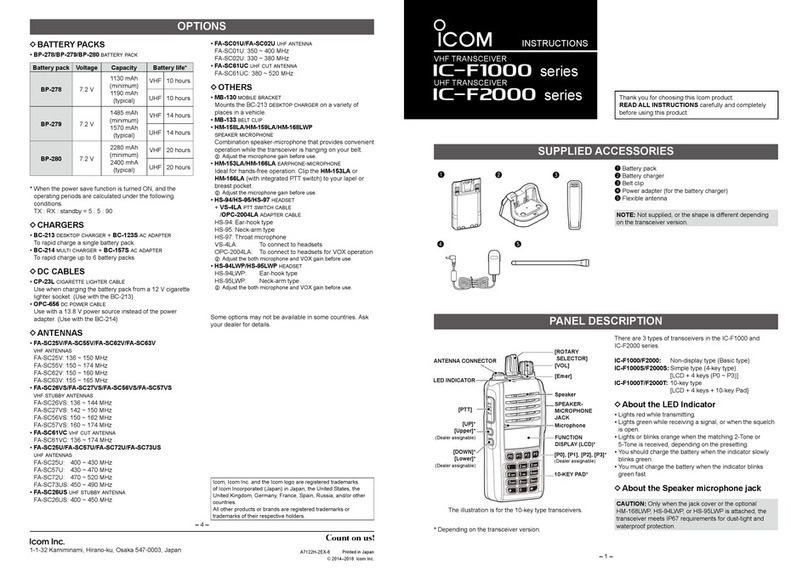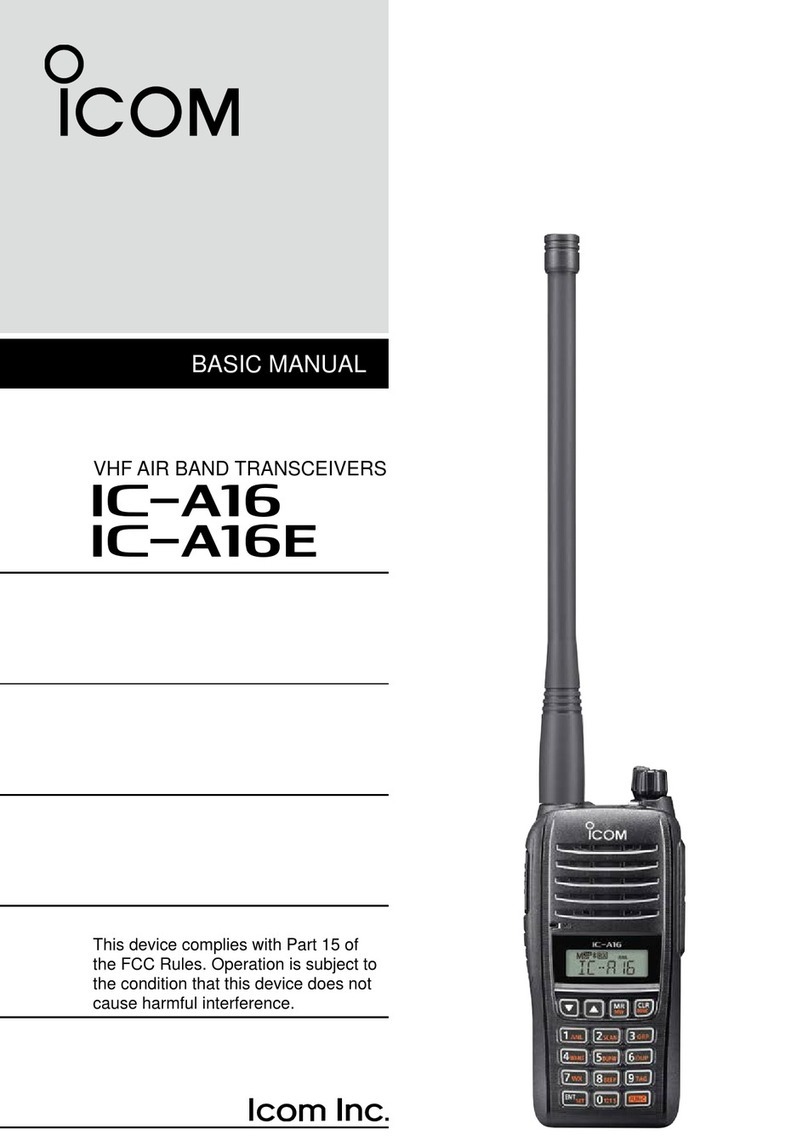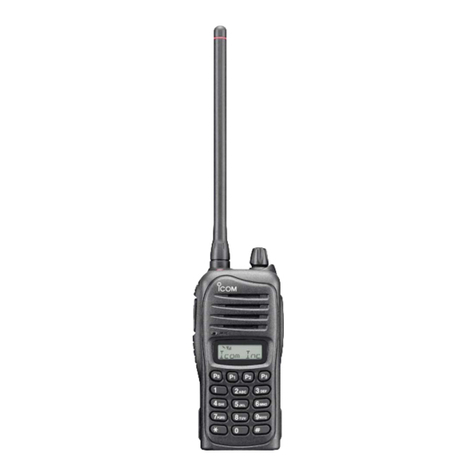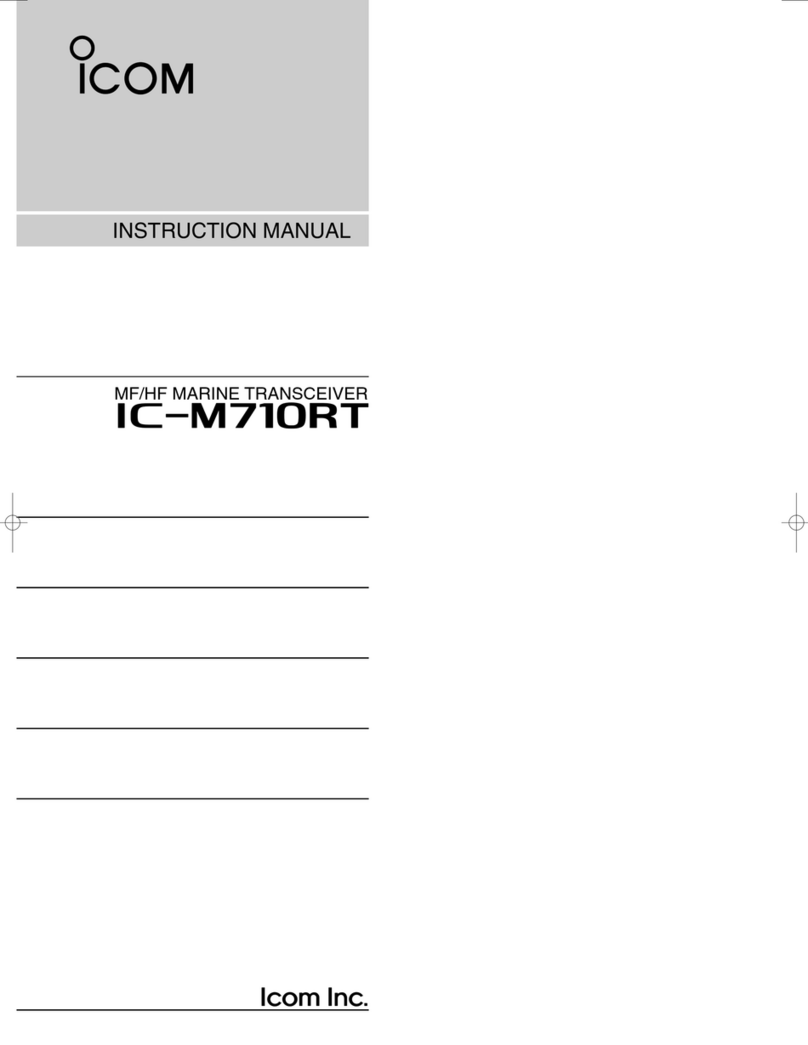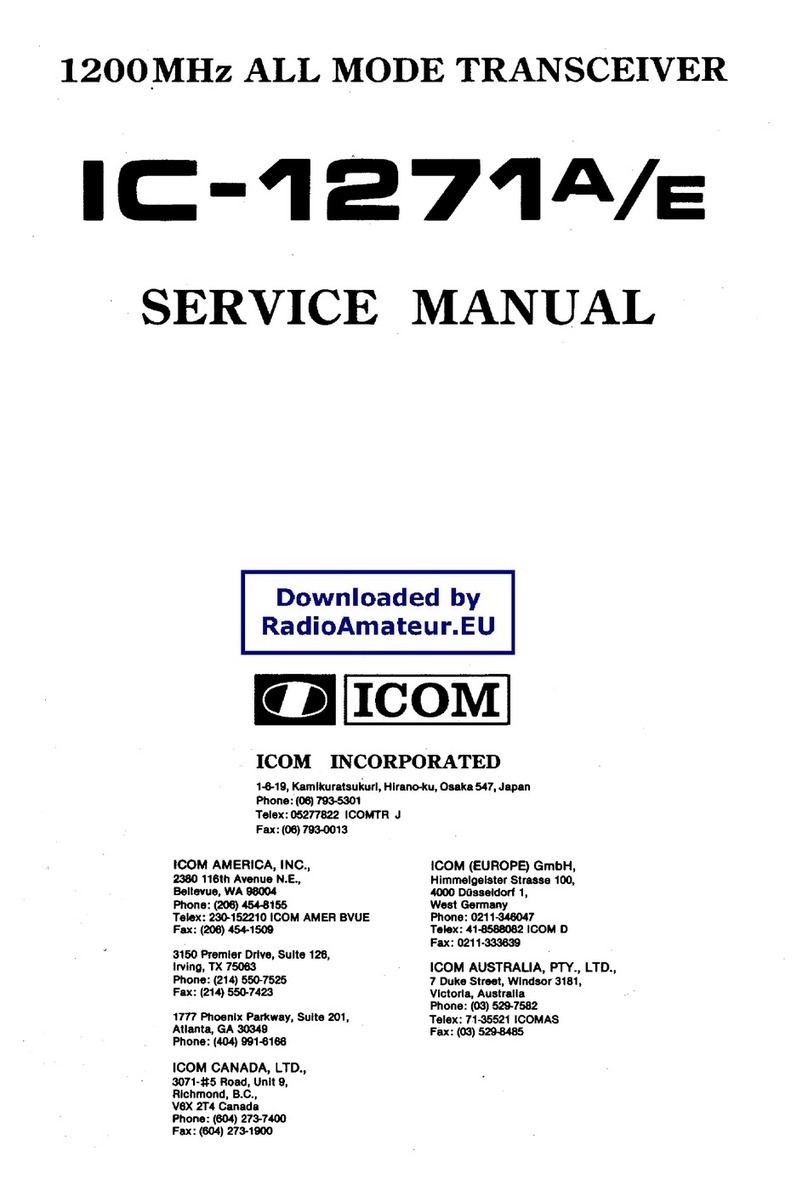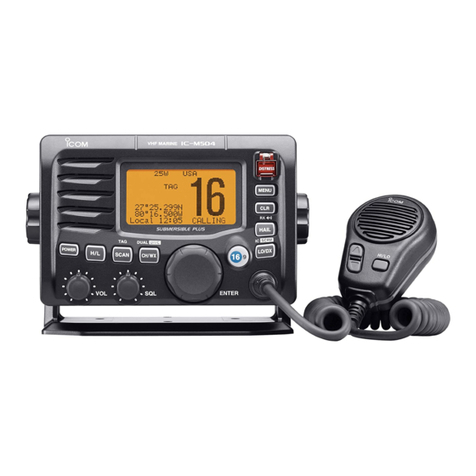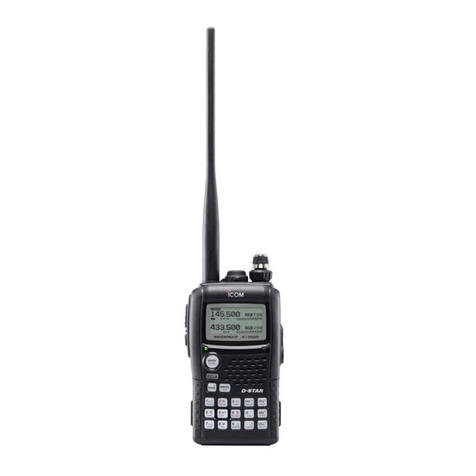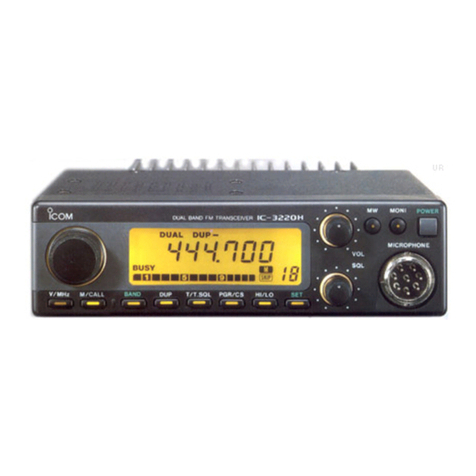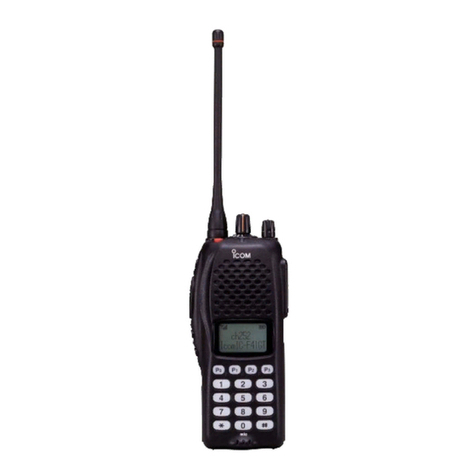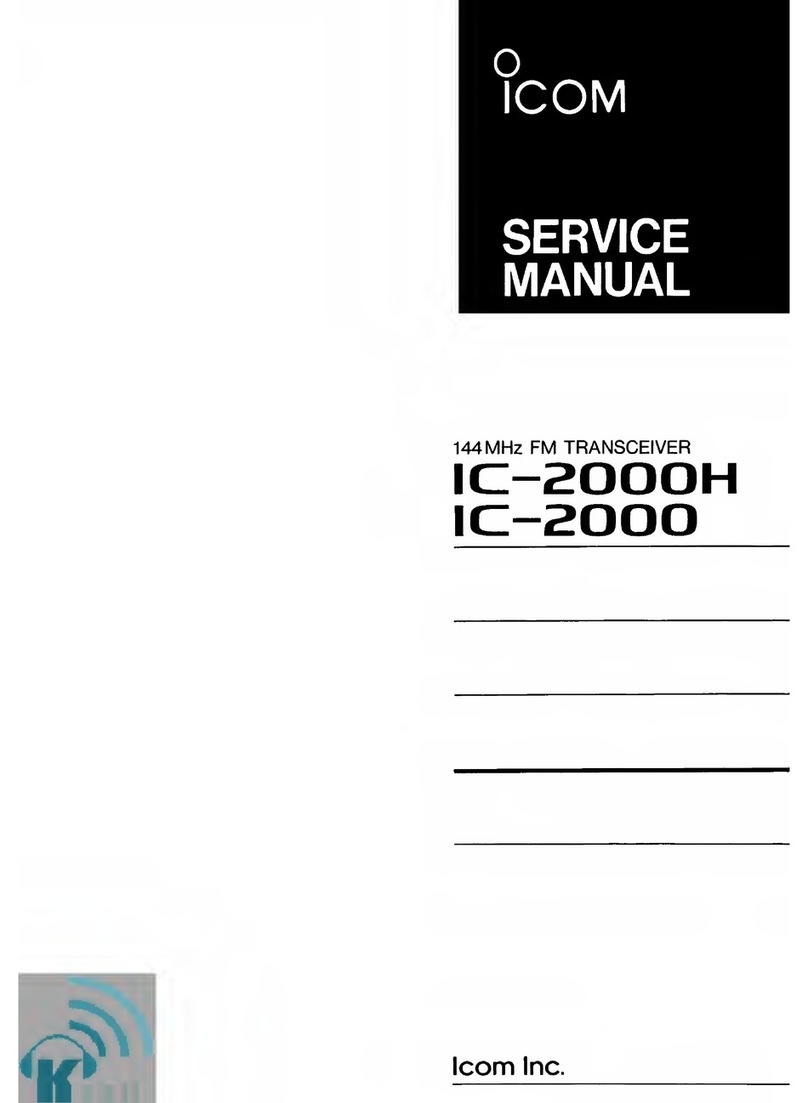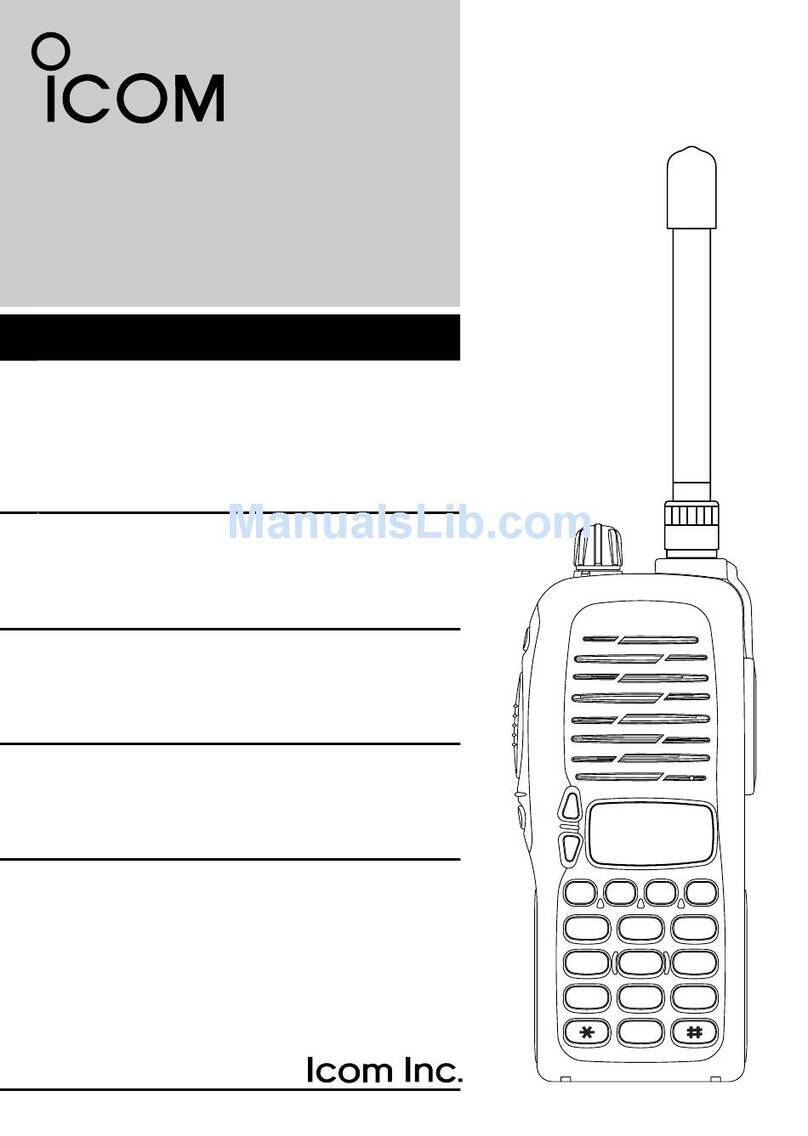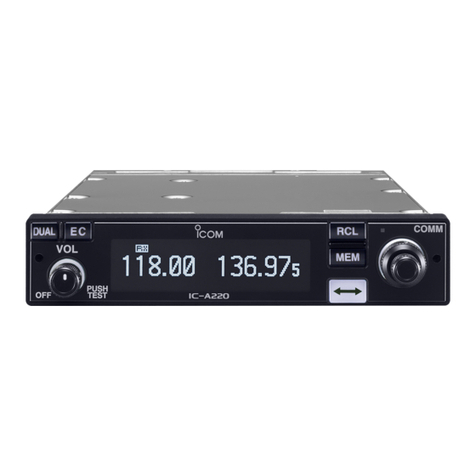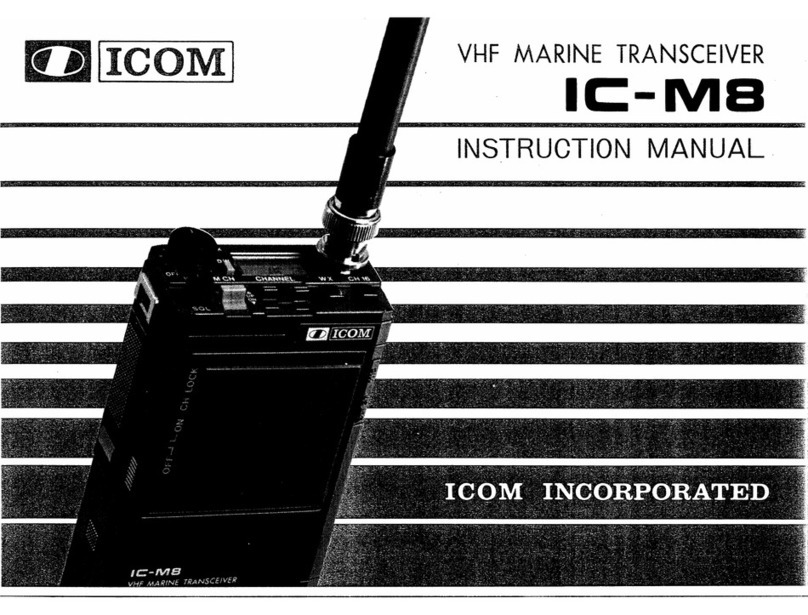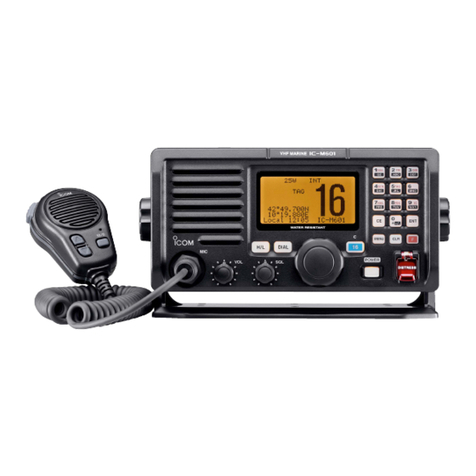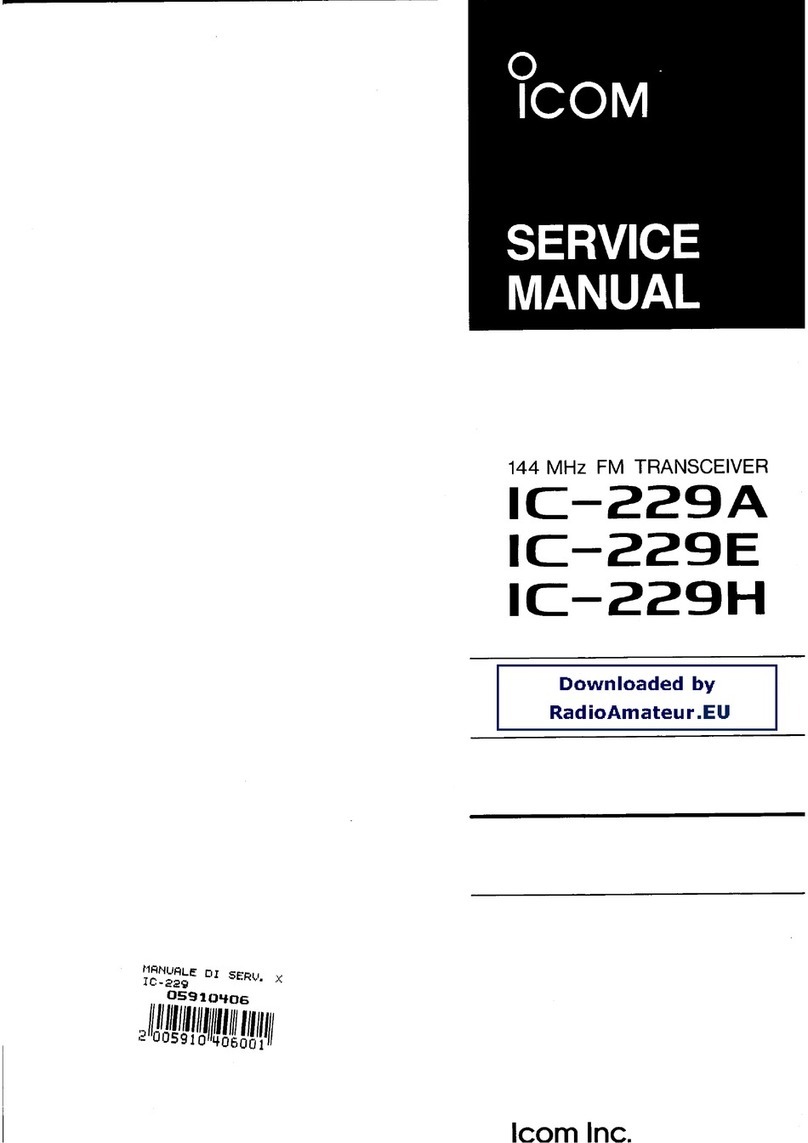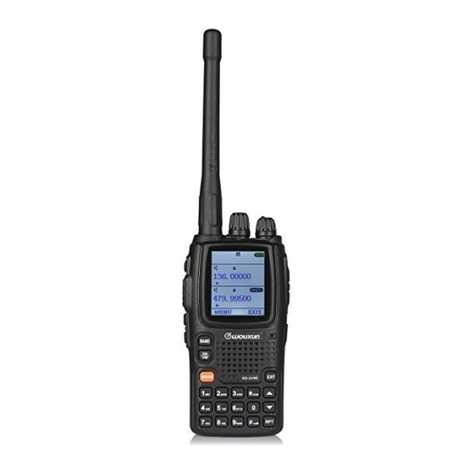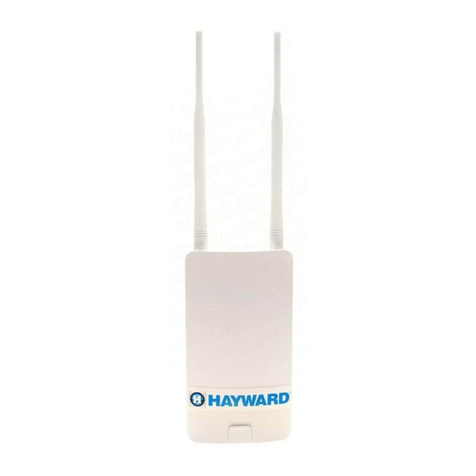Icom IC-F14 User manual

INSTRUCTION MANUAL
This device complies with Part 15 of the FCC
rules. Operation is subject to the condition
that this device does not cause harmful inter-
ference.
UHF TRANSCEIVER
iF24/S
VHF TRANSCEIVER
iF14/S
iF26-L

i
W AR N IN G
Your Icom radio generates RF electromagnetic energy
during transmit mode. This radio is designed for and
classified as “Occupational Use Only”, meaning it must
be used only during the course of employment by indi-
viduals aware of the hazards, and the ways to minimize
such hazards. This radio is NOT intended for use by the
“General Population” in an uncontrolled environment.
This radio has been tested and complies with the FCC
RF exposure limits for “Occupational Use Only”. In addition, your Icom
radio complies with the following Standards and Guidelines with regard
to RF energy and electromagnetic energy levels and evaluation of such
levels for exposure to humans:
• FCC OET Bulletin 65 Edition 97-01 Supplement C, Evaluating
Compliance with FCC Guidelines for Human Exposure to Radio
Frequency Electromagnetic Fields.
• American National Standards Institute (C95.1-1992), IEEE Standard
for Safety Levels with Respect to Human Exposure to Radio Fre-
quency Electromagnetic Fields, 3 kHz to 300 GHz.
• American National Standards Institute (C95.3-1992), IEEE Recom-
mended Practice for the Measurement of Potentially Hazardous
Electromagnetic Fields– RF and Microwave.
• The following accessories are authorized for use with this product.
Use of accessories other than those specified may result in RF ex-
posure levels exceeding the FCC requirements for wireless RF ex-
posure.; Belt Clip (MB-94), Rechargeable Li-Ion Battery Pack (BP-
230N/BP-232N) and Speaker-microphone (HM-131L).
C AU TIO N
To ensure that your expose to RF electromagnetic
energy is within the FCC allowable limits for occu-
pational use, always adhere to the following guide-
lines:
SAFETY TRAINING INFORMATION

SAFETY TRAINING INFORMATION
• DO NOT operate the radio without a proper antenna attached, as
this may damaged the radio and may also cause you to exceed FCC
RF exposure limits. A proper antenna is the antenna supplied with
this radio by the manufacturer or antenna specifically authorized by
the manufacturer for use with this radio.
•
DO NOT transmit for more than 50% of total radio use time (“50%
duty cycle”). Transmitting more than 50% of the time can cause FCC
RF exposure compliance requirements to be exceeded. The radio is
transmitting when the “Transmit indicator” lights red. You can cause
the radio to transmit by pressing the “PTT” switch or VOX function.
•
ALWAYS keep the antenna at least 2.5 cm (1 inch) away from the
body when transmitting and only use the Icom belt-clip which is
listed on page 35 when attaching the radio to your belt, etc., to en-
sure FCC RF exposure compliance requirements are not exceeded.
To provide the recipients of your transmission the best sound qual-
ity, hold the antenna at least 5 cm (2 inches) from your mouth, and
slightly off to one side.
The information listed above provides the user with the information
needed to make him or her aware of RF exposure, and what to do to as-
sure that this radio operates with the FCC RF exposure limits of this radio.
Electromagnetic Interference/Compatibility
During transmissions, your Icom radio generates RF energy that can
possibly cause interference with other devices or systems. To avoid such
interference, turn off the radio in areas where signs are posted to do so.
DO NOT operate the transmitter in areas that are sensitive to electro-
magnetic radiation such as hospitals, aircraft, and blasting sites.
Occupational/Controlled Use
The radio transmitter is used in situations in which persons are exposed
as consequence of their employment provided those persons are fully
aware of the potential for exposure and can exercise control over their
exposure.
ii

iii
FOREWORD
READ ALL INSTRUCTIONS carefully and completely before
using the transceiver.
SAVE THIS INSTRUCTION MANUAL— This instruction
manual contains important operating instructions for the IC-F14/
IC-F14S vhf transceivers and IC-F24/IC-F24S/IC-F26-L uhf
transceivers.
EXPLICIT DEFINITIONS
WORD DEFINITION
RDANGER Personal death, serious injury or an explo-
sion may occur.
RWARNING Personal injury, fire hazard or electric
shock may occur.
CAUTION Equipment damage may occur.
NOTE
If disregarded, inconvenience only. No risk
of personal injury, fire or electric shock.
OPERATING NOTES
• When transmitting with a portable radio, hold the radio in a
vertical position with its microphone 5 to 10 centimeters (2 to 4
inches) away from your mouth. Keep the antenna at least 2.5
centimeters (1 inch) from your head and body.
• If you wear a portable two-way radio on your body, ensure that
the antenna is at least 2.5 centimeters (1 inch) from your body
when transmitting.

iv
PRECAUTION
RWARNING! NEVER hold the transceiver so that the an-
tenna is very close to, or touching exposed parts of the body,
especially the face or eyes, while transmitting. The transceiver will
perform best if the microphone is 5 to 10 cm (2 to 4 inches) away
from the lips and the transceiver is vertical.
RWARNING! NEVER operate the transceiver with a headset
or other audio accessories at high volume levels.
CAUTION! NEVER short the terminals of the battery pack.
CAUTION! NEVER connect the transceiver to a power source
other than the BP-230N or BP-232N. Such a connection will ruin
the trans-ceiver.
DO NOT push the PTT when not actually desiring to transmit.
DO NOT use or place the transceiver in direct sunlight or in
areas with temperatures below –22°F (–30°C) or above +140°F
(+60°C).
DO NOT modify the transceiver for any reason.
MAKE SURE the flexible antenna and battery pack are securely
attached to the transceiver, and that the antenna and battery pack
are dry before attachment. Exposing the inside of the transceiver
to water will result in serious damage to the transceiver.
The use of non-Icom battery packs/chargers may impair trans-
ceiver performance and invalidate the warranty.
FCC caution:
Changes or modifications to this device, not expressly approved
by Icom Inc., could void your authority to operate this transceiver
under FCC regulations.
Icom, Icom Inc. and the Icom logo are registered trademarks of Icom Incor-
porated (Japan) in the United States, the United Kingdom, Germany, France,
Spain, Russia and/or other countries.

v
TABLE OF CONTENTS
SAFETY TRAINING INFORMATION............................................................i
FOREWORD .............................................................................................. iii
EXPLICIT DEFINITIONS............................................................................ iii
OPERATING NOTES.................................................................................. iii
PRECAUTION ............................................................................................ iv
TABLE OF CONTENTS...............................................................................v
1 ACCESSORIES ................................................................................ 1−5
■ Supplied accessories .........................................................................1
■ Accessory attachments ......................................................................2
■ Front, top and side panels..................................................................6
2 PANEL DESCRIPTION................................................................... 6−11
■ LED indicator......................................................................................8
■ Programmable function keys..............................................................9
■ Turning power ON.............................................................................12
■ Channel selection.............................................................................12
3 CONVENTIONAL OPERATION ................................................... 12−17
■ Call procedure..................................................................................13
■ Receiving and transmitting ...............................................................14
■ Scrambler function ...........................................................................16
■ Setting the squelch level...................................................................16
■ Man Down Emergency Call..............................................................17
■ Emergency Call ................................................................................17
4 OPTIONAL UNIT INSTALLATION ............................................... 18−19
■ Optional unit installation ...................................................................18
■ Scrambler unit installation ................................................................19
5 BATTERY CHARGING ................................................................. 20−27
■ Caution.............................................................................................20
■ Optional battery chargers .................................................................23
6 BATTERY CASE........................................................................... 28−29
■ Optional battery case (BP-240) ........................................................28
7 SWIVEL BELT CLIP ..................................................................... 30−33
■ MB-93 contents ................................................................................30
■ To attach ...........................................................................................30
■ To detach ..........................................................................................32
8 OPTIONS...................................................................................... 34−37
9 FCC INFORMATION............................................................................38

1
1
ACCESSORIES
1
■Supplied accessories
The following accessories are supplied: Qty.
qFlexibleantenna.................................... 1
wBatterypack....................................... 1
eBeltclip .......................................... 1
rUnit cover (double-sided tape)* . . . . . . . . . . . . . . . . . . . . . . . . 1
tJackcover(withscrews) .......................... 1set
*Use the unit cover as a spare. Ask your dealer for details.
q w
r
e
t

2
1ACCESSORIES
■Accessory attachments
DFlexible antenna
Connect the supplied flexible antenna
to the antenna connector.
CAUTION:
•
NEVER HOLD the antenna when
carrying the transceiver.
• Transmitting without an antenna
may damage the transceiver.

3
1
ACCESSORIES
1
DBattery pack
To attach the battery pack:
Slide the battery pack on the back of the transceiver in the direc-
tion of the arrow (q), then lock it with the battery release button.
• Slide the battery pack until the battery release button makes a ‘click’
sound.
To release the battery pack:
Push the battery release button in the direction of the arrow (w)
as shown below. The battery pack is then released.
NEVER release or attach the battery pack when the transceiver
is wet or soiled. This may result in water or dust getting into the
transceiver/battery pack and may result in the transceiver being
damaged.
q
w

4
1ACCESSORIES
DJack cover
Attach the jack cover when the optional speaker-microphone is not
used.
To attach the jack cover:
qAttach the jack cover to the
[SP MIC] connector.
wTighten the screws.
To detach the jack cover:
qUnscrew the screws with a
phillips screwdriver.
wDetach the jack cover for the
optional equipment connec-
tion.
w
w
q
q
q
w

5
1
ACCESSORIES
1
DBelt clip
To attach the belt clip:
qRelease the battery pack if it is attached.
wSlide the belt clip in the direction of the arrow until the belt clip
is locked and makes a ‘click’ sound.
To detach the belt clip:
qRelease the battery pack if it is attached.
wPinch the clip (q), and slide the belt clip in the direction of the
arrow (w).
q
w

6
2PANEL DESCRIPTION
■Front, top and side panels
r
q
w
y
u
i
e
Microphone
Speaker
t
IC-F14S/F24S IC-F14/F24/F26-L
qCHANNEL SW/SELECTOR
• IC-F14S/F24S : Toggle the channel switch to select the
pre-programmed channel 1 or 2.
• IC-F14/F24/F26-L : Rotate the channel selector to select the
pre-programmed memory channels.
wVOLUME CONTROL [VOL]
Rotate to turn the power ON/OFF and adjust the audio level.

7
2
PANEL DESCRIPTION
2
eLED INDICATOR (p. 8)
➥ Lights red while transmitting.
➥ Lights green while receiving a signal, or when the squelch is
open.
➥ Lights/blinks orange when the matched 2/5-tone code is re-
ceived, according to the pre-programming.
rSPEAKER-MICROPHONE CONNECTOR [SP MIC]
Connects the optional speaker-microphone, earphone, etc.
[SP MIC] jack cover
NOTE: Attach the [SP MIC] jack
cover when the optional equip-
ment is not used. (p. 4)
tDEALER-PROGRAMMABLE KEY [Lower]
The desired function can be assigned by your dealer. (p. 9)
yPTT SWITCH [PTT]
Push and hold to transmit; release to receive.
uDEALER-PROGRAMMABLE KEY [Upper]
The desired function can be assigned by your dealer. (p. 9)
iANTENNA CONNECTOR
Connects the supplied antenna.
DProgrammable key reference
Upper
Lower

8
2PANEL DESCRIPTION
■LED indicator
The LED indicator indicates several informa-
tion as follows;
(Ref.; R=Red, G=Green, O=Orange)
R R R R
O O
O O
G G G G
G G
G G G G G G G G
R G R G R G R G R G R G R G R G
R O R O R O R O R O R O R O R O
G
G G
Clone Err
Clone TX/RX
Low BATT1
Low BATT2
Busy
F/S Scan
Call LED Blink
Call LED ON
TX Low BAT T 2
R
TX
• TX: Turns Red while transmitting a signal.
• RX: Turns Green while receiving a signal.
• Call LED (ON): When receiving a matched 2/5-tone.
• Call LED (Blink): When receiving a matched 2/5-tone.
• Fast/Slow scan: Blinks while Fast/Slow scan is activated.
• Low BATT1: You should charge the battery. (blinks slowly)
• Low BATT2: You must charge the battery. (blinks fast)
• TX low BATT2: Low BATT2 was detected during TX mode.
• CH err: Non-programmed channel is selected.

9
2
PANEL DESCRIPTION
2
■Programmable function keys
The following functions can be assigned to [Upper] and [Lower]
programmable function keys.
Consult your Icom dealer or system operator for details concern-
ing your transceivers programming.
If the programmable function names are bracketed in the following
explanations, the specific key used to activate the function de-
pends on programming.
SCAN A KEY
➥This key’s operation depends on the Power ON Scan setting.
When the power ON scan function is turned OFF;
Push to start and cancel scanning operation. In case of trans-
mission during scan, cancels scanning.
When the power ON scan function is turned ON;
Push to pause scanning. Scanning resumes after passing a
specified time period. In case of transmission during scan,
pauses scanning. Scanning resumes after passing a specified
time period.
SCAN B KEY
Push to start and cancel scanning operation. In case of transmis-
sion during scan, pauses scanning. Scanning resumes after pass-
ing a specified time period.
PRIORITY CHANNEL KEYS
➥Push to select the Priority A or Priority B channel.
➥Push and hold [Prio A (Rewrite)] to rewrite the Prio A channel.
MR-CH 1/2/3/4 KEYS
Push to select a memory channels 1 to 4 directly.
NOTE: The memory channels 3 and 4 are available for IC-F14S/
F24S when [MR-CH 3] and [MR-CH 4] keys are assigned.

10
2PANEL DESCRIPTION
MONITOR KEY
➥Mute and release the CTCSS (DTCS) or 2-tone squelch mute.
Open any squelch/deactivate any mute while pushing this key.
(LMR operation only)
➥Activates one of (or two of) the following functions on each
channel independently: (PMR operation only)
• Push and hold to un-mute the channel (audio is emitted; ‘Audible’
condition).
• Push to mute the channel (sets to ‘Inaudible’ only).
• Push to un-mute the channel (sets to ‘Audible’ only).
• Push after the communication is finished to send a ‘reset code’.
NOTE: The un-mute condition (‘Audible’ condition) may auto-
matically return to the mute condition (‘Inaudible‘ condition)
after a specified period.
LOCK KEY
Push and hold to electronically lock all programmable keys except
the following:
[Call] (incl. Call A and Call B), [Moni(Audi)] and [Emergency] keys.
OUTPUT POWER SELECTION KEY
Select the transmit output power temporarily or permanently, de-
pending on the pre-setting.
• Ask your dealer for the output power level for each selection.
TALK AROUND KEY
➥Push to turn the talk around function OFF.
➥Push and hold to turn the talk around function ON.
• The talk around function equalizes the transmit frequency to the
receive frequency for transceiver-to-transceiver communication.
WIDE/NARROW KEY
➥Push to select the IF bandwidth to wide.
• The wide passband width can be selected from 25.0 or 20.0 kHz
using the CS-F14 cloning software. (PMR operation only) Ask
your dealer for details.
➥Push and hold to select the IF bandwidth to narrow.

11
2
PANEL DESCRIPTION
2
DTMF AUTODIAL KEY
Push to transmit the programmed DTMF code.
CALL KEYS
Push to transmit a 2/5-tone code.
• Call transmission is necessary before you call another station de-
pending on your signalling system.
• [Call A] and/or [Call B] keys may be available when your system
employs selective ‘Individual/Group’ calls. Ask your dealer which call
is assigned to each key.
EMERGENCY KEYS
➥Push and hold to transmit an emergency call.
➥When [Emergency Single (Silent)] or [Emergency Repeat
(Silent)] is pushed, an emergency call is transmitted with no
beep emission.
• If you want to cancel the emergency call, push (or push and hold)
the key again before transmitting the call.
• The emergency call is transmitted one time only or repeatedly
until receiving a control code depending on the pre-setting.
VOICE SCRAMBLER FUNCTION KEYS
➥Push to turn the voice scrambler function OFF.
➥Push and hold to turn the voice scrambler function ON.
OPT OUT KEYS
➥Push to inactivate the connected output signal level.
➥Push and hold to activate the connected output signal level.
SIREN KEY
Push to emit a siren. This function can be used for situations other
than an emergency alert such as a security alarm for example.

12
3
CONVENTIONAL OPERATION
■Turning power ON
➥Rotate [VOL] to turn power ON.
■Channel selection
IC-F14S/F24S:
Toggle [CHANNEL SWITCH] to se-
lect the channel 1 or 2, or, push one of
[MR-CH 1] to [MR-CH 4] key to select a
channel directly.
• The memory channels 3 and 4 are avail-
able when [MR-CH 3] and [MR-CH 4]
keys are assigned.
IC-F14/F24/F26-L:
Rotate [CHANNEL SELECTOR] to se-
lect the desired operating channel, in
sequence; or, push one of [MR-CH 1]
to [MR-CH 4] key to select a channel
directly.
AUTOMATIC SCAN TYPE:
Channel setting is not necessary for this type. When turning the
power ON, the transceiver automatically starts scanning. Scanning
stops when receiving a call.
[VOL]
[CHANNEL
SELECTOR]
[CHANNEL SWITCH]

13
3
CONVENTIONAL OPERATION
3
■Call procedure
When your system employs tone signalling (excluding CTCSS and
DTCS), the call procedure may be necessary prior to voice trans-
mission. The tone signalling employed may be a selective calling
system which allows you to call specific station(s) only and prevent
unwanted stations from contacting you.
qSelect the desired TX code channel or 2/5-tone code according
to your System Operator’s instructions.
• This may not be necessary depending on programming.
wPush the call key (assigned to one of the dealer programmable
keys.) (p. 11)
eAfter transmitting a 2/5-tone code, the remainder of your com-
munication can be carried out in the normal fashion.
Selective calling Non-selective calling

14
3CONVENTIONAL OPERATION
■Receiving and transmitting
NOTE: Transmitting without an antenna may damage the trans-
ceiver. See p. 2 for antenna attachment.
Receiving:
qRotate [VOL] to turn power ON.
wToggle [CHANNEL SWITCH] (IC-F14S/F24S), rotate [CHAN-
NEL SELECTOR] (IC-F14/F24/F26-L) or push one of [MR-CH
1] to [MR-CH 4] key to select a channel.
For IC-F14S/F24S:
The memory channels 3 and 4 are available when [MR-CH 3]
and [MR-CH 4] keys are assigned.
eWhen receiving a call, adjust the audio output level to a com-
fortable listening level.
Transmitting:
Wait for the channel to become clear to avoid interference.
qWhile pushing and holding [PTT], speak into the microphone at
a normal voice level.
• When a tone signalling system is used, the call procedure de-
scribed on p. 13 may be necessary.
wRelease [PTT] to return to receive.
IMPORTANT!: To maximize the readability of your signal;
1. Pause briefly after pushing [PTT].
2. Hold the microphone 5 to 10 cm (2 to 4 inches) from your
mouth, then speak into the microphone at a normal voice
level.
Other manuals for IC-F14
3
This manual suits for next models
4
Table of contents
Other Icom Transceiver manuals
Popular Transceiver manuals by other brands
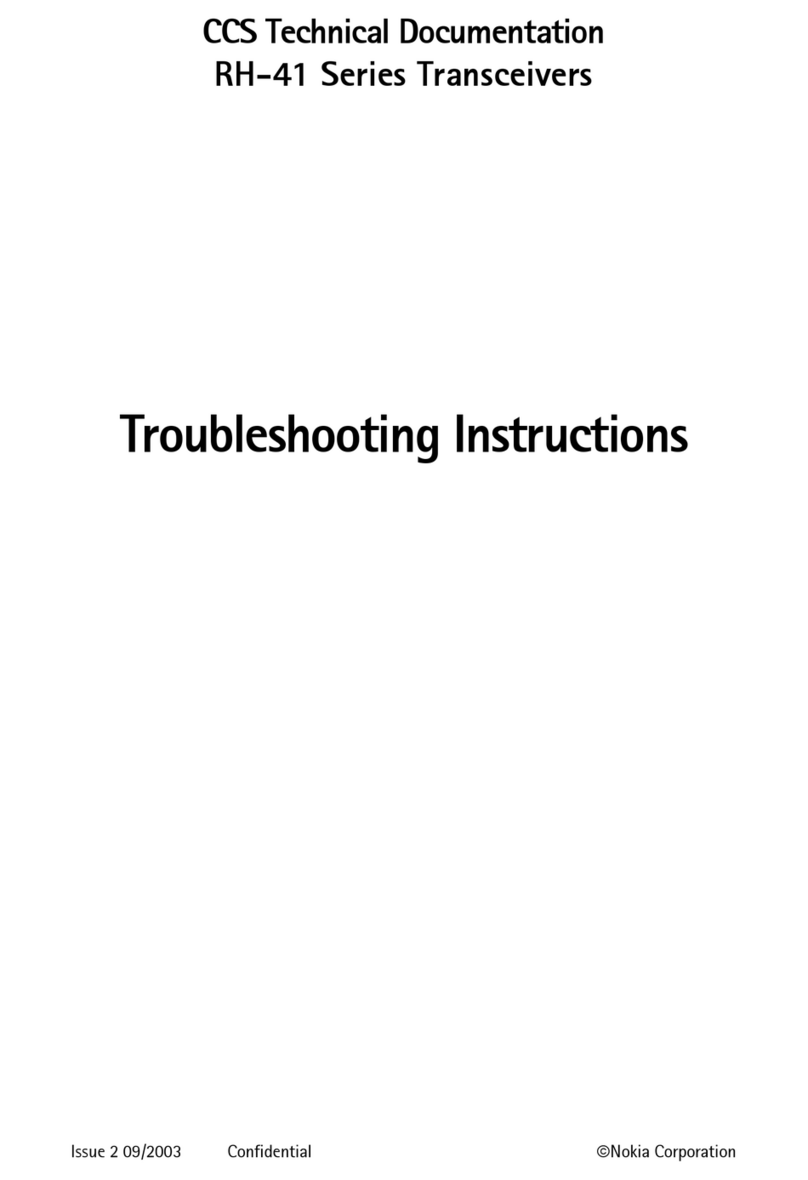
Nokia
Nokia RH-41 Series Troubleshooting instructions
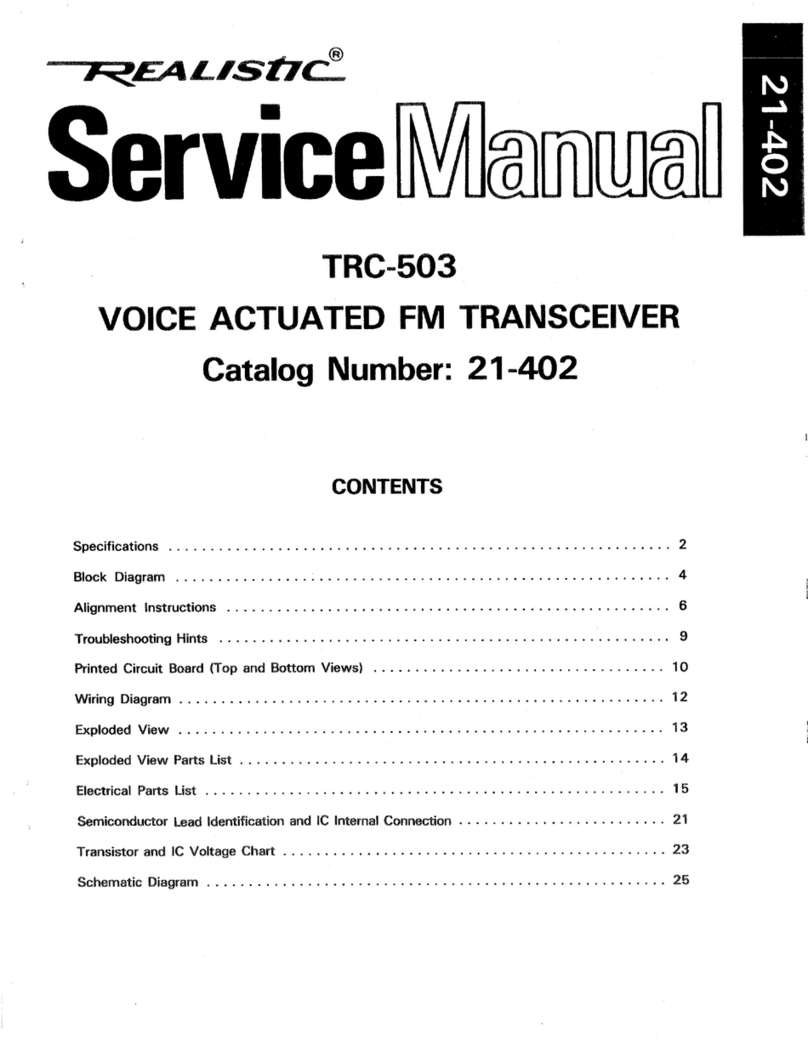
Realistic
Realistic TRC-503 Service manual
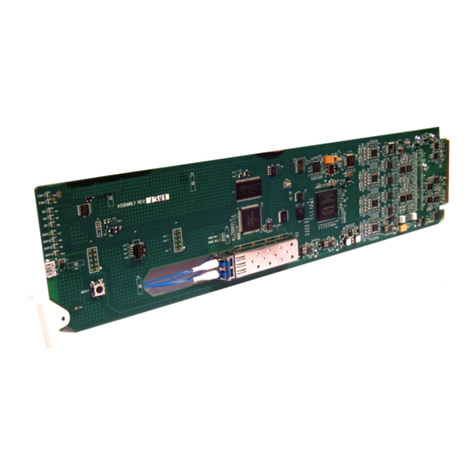
Cobalt Digital Inc
Cobalt Digital Inc 9433-EMDE-75/110 product manual
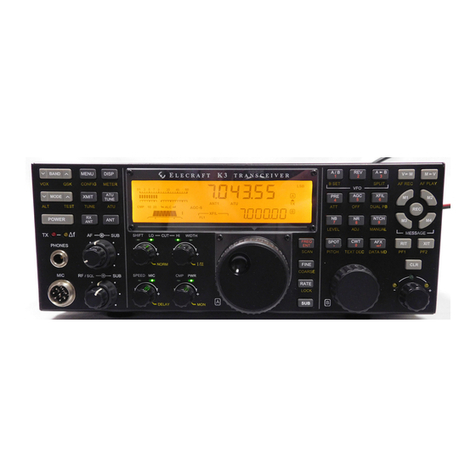
ELECRAFT
ELECRAFT KPA3 installation instructions
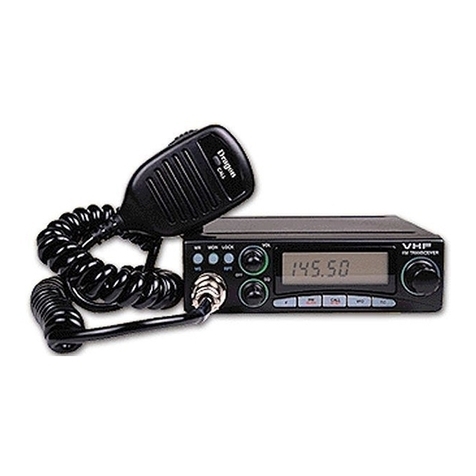
Albrecht
Albrecht AE 550 instruction manual

Vertex Standard
Vertex Standard VX-410 Series operating manual
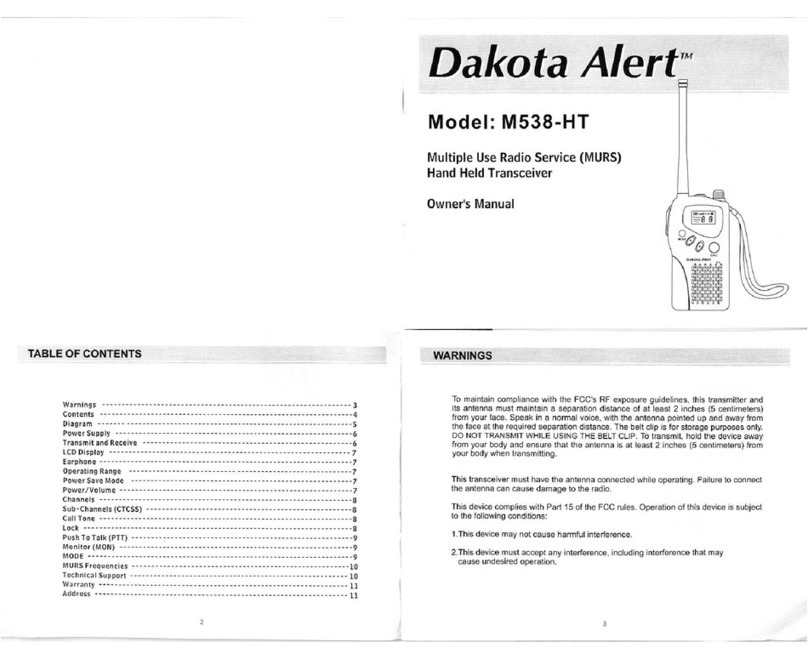
Dakota Alert
Dakota Alert M538-HT owner's manual
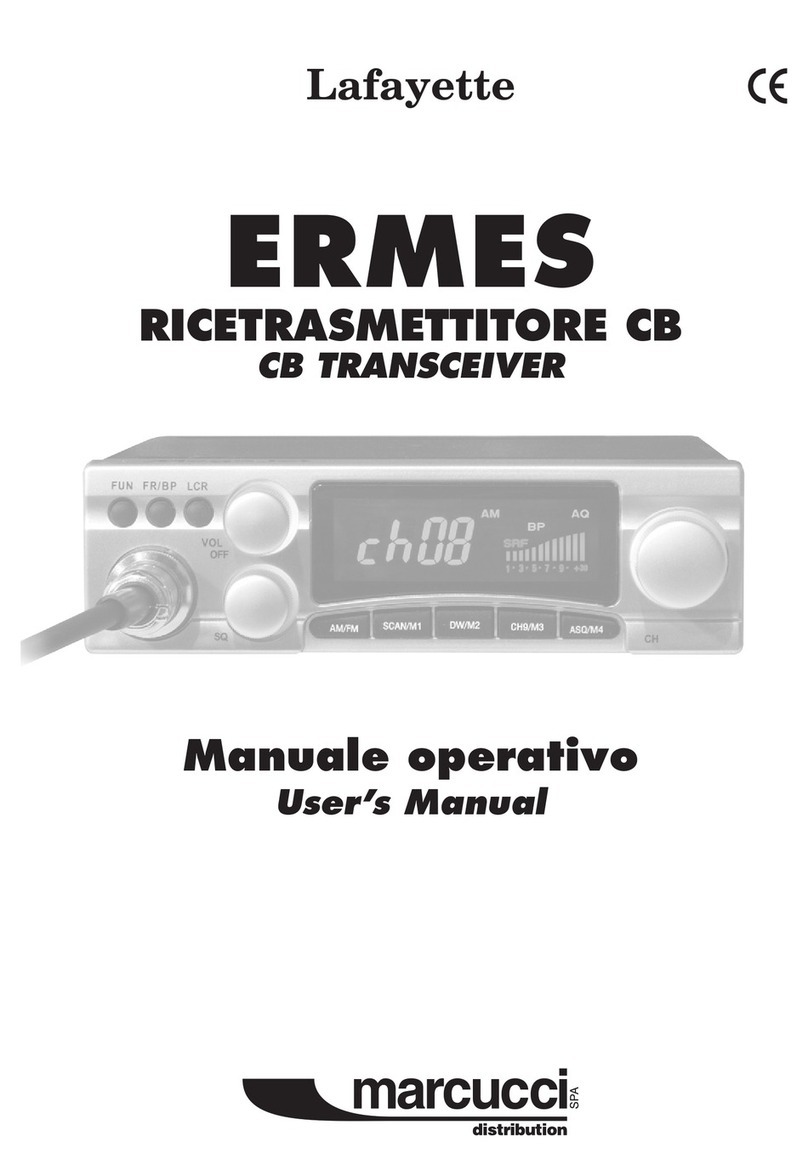
Lafayette
Lafayette ERMES user manual

Kenwood
Kenwood TK 3230 - FreeTalk XLS UHF instruction manual
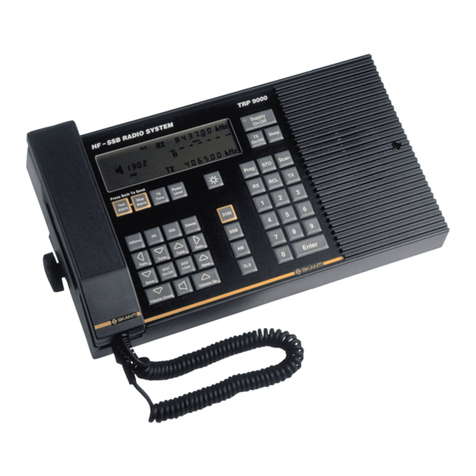
Skanti
Skanti TRP 9500 Technical manual
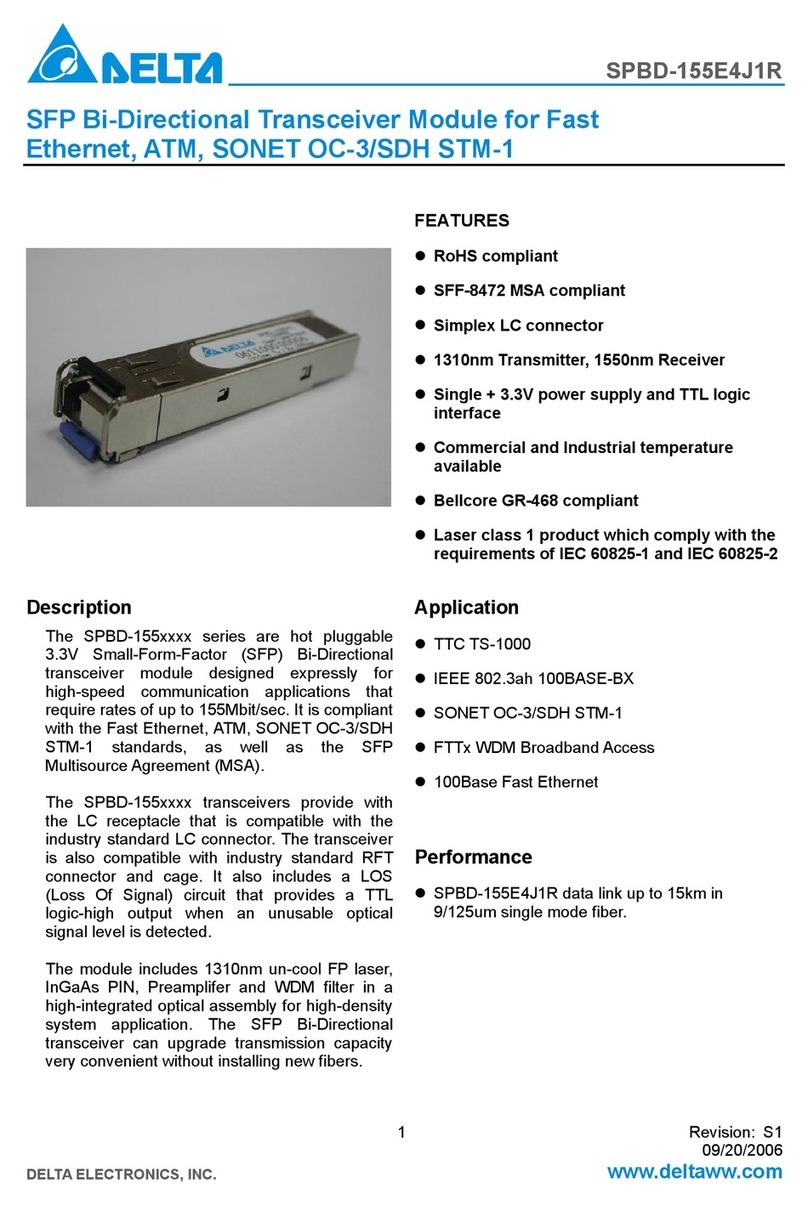
Delta Electronics
Delta Electronics SFP Bi-Directional Transceiver Module... Specification sheet
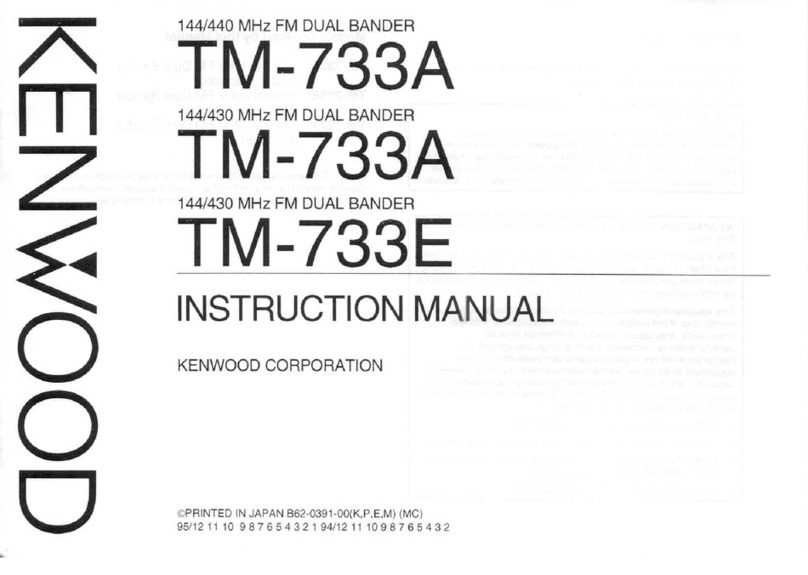
Kenwood
Kenwood TM-733A instruction manual
